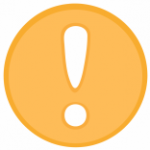Goals, Strategies, and Language Use in Methods
This book is running in a long beta. Revisions are currently underway. Check back in January 2025 for updated content.
As a reminder, there are different tools for each section of the research article, and all these tools can be categorized into three sets: Goals, Strategies, and Language Use. Goals are used to communicate your overall argumentative intent. Strategies are used to achieve your goals, and Language Use connects the goals and strategies in meaningful ways to enable explicit and cohesive expression of ideas.

- There are three overarching Goals of a Methods section. What do you think they are?
- What common Language Use expressions (e.g., Data were collected…) have you used in Methods? What do those expressions intend to communicate?
Writing Strategies for Communicating Goals in Methods
In the next sections, you will learn about the EIGHT Strategies that will help you achieve the three Goals of Methods. These Strategies will be useful for (1) analyzing model articles by visualizing how published authors achieve their communicative goals and (2) facilitating your writing process by helping you utilize similar strategies while maintaining your individual style and identity as a researcher. In this section, we will also provide examples of the Language Use for realizing each of the strategies.
Communicative Goals in Methods
Remember that Goals are used as tools to help you realize your overall communicative intent. In research writing, our intent in the Methods section is to justify your plan of action. You can justify your plan of action using three main Goals. Contextualize the Methods, or setting the scene, includes all details, decisions, and rationales that occur prior to the study. This Goal may include information about the research design, participants/subjects, or setting. This Goal is not obligatory in all fields. Describe the Study is often the most extensive Goal. It is used to outline details, decisions, and rationales specific to the step-by-step procedures to obtain raw data. Analyze the Data enables writers to discuss how the raw data is translated into eloquent, credible results that answer precise research questions and/or hypotheses.
Goal One: Contextualize the Methods
In Contextualize the Methods, the intent is to foreground details of your study that help clarify actions taken later in the step-by-step procedures, or study actions. For example, if you are working with human participants, their demographic details and the rationale for including or excluding certain participants are important to know before segueing into the procedures involving those participants. Another example is agricultural research, such as crop sciences. Before detailing how crops were grown and maintained, we need to understand contextual factors such as climate and location so that results can be interpreted appropriately and generalized to similar contexts. Think of this Goal as setting the scene of the study by providing details of the overall study description and necessary background information for the research approach. Essentially, you can include any information that is needed prior to delineating how the study was actually conducted step-by-step.
Goal Two: Describe the Study
The second goal is Describe the Study. Here, you need to specify the process of data acquisition and define data descriptors. Describing what resources and tools were used and what steps were taken to collect and/or prepare your data comprise a big part of this Goal. Also, you must clarify conditions, treatments, controls, etc. This Goal is oftentimes the most extensive, and some disciplines start Methods sections with this Goal because the contextual information is either embedded in the procedures or is not relevant, as is the case in computational research.
Goal Three: Analyze the Data
Once raw data is obtained, there is often a step to transforming that data to eloquent, credible results in response to research questions and/or hypotheses. This Goal is Analyze the Data and is used to inform readers of any steps, tools, or techniques used to prepare the data for analysis and then to conduct the actual qualitative and/or quantitative analysis. These details and decisions should include rationales that establish the Results as credible and trustworthy.

It is important to know that you may not use all the tools including the communicative Goals and Strategies introduced here. Your choice of tools depends on the nature of your research. Accordingly, some strategies might be more extensive than others and some may not be used at all. You will see which ones are frequently used by analyzing sample articles in your discipline.

